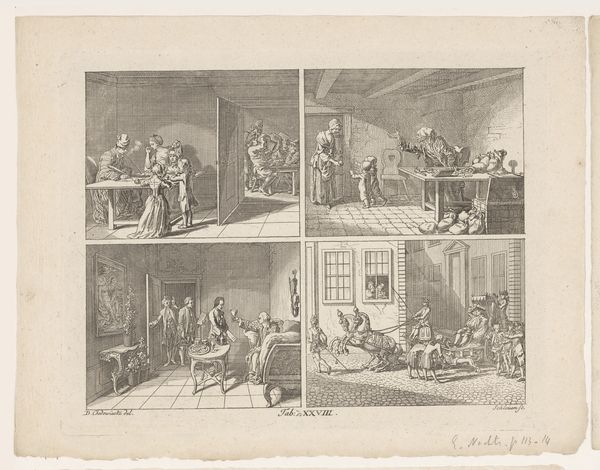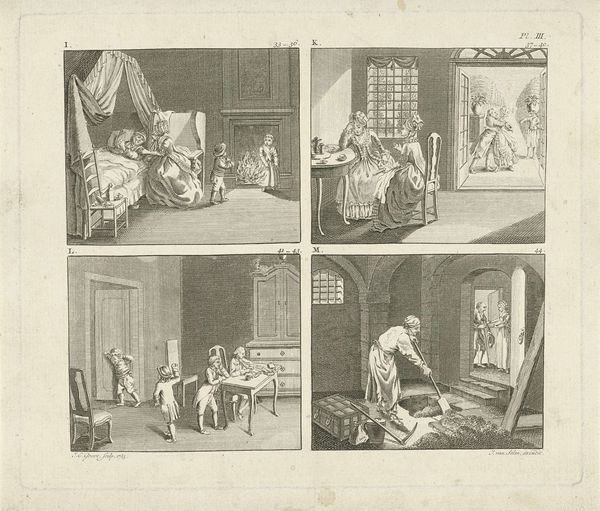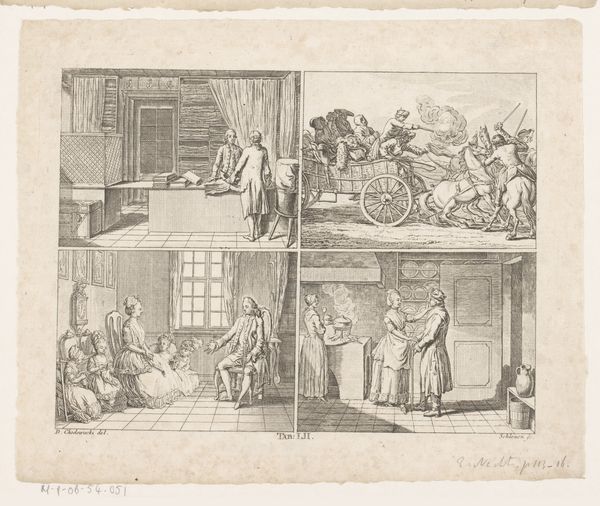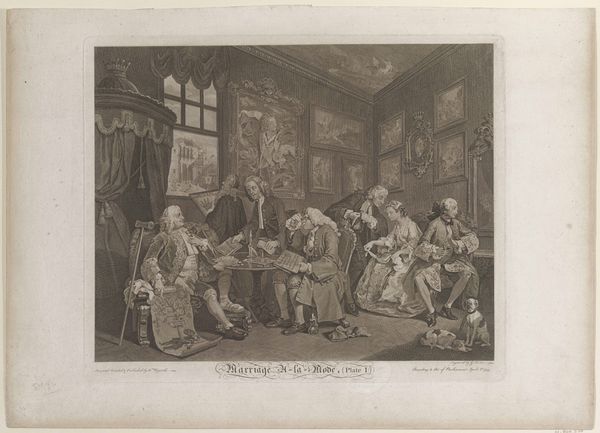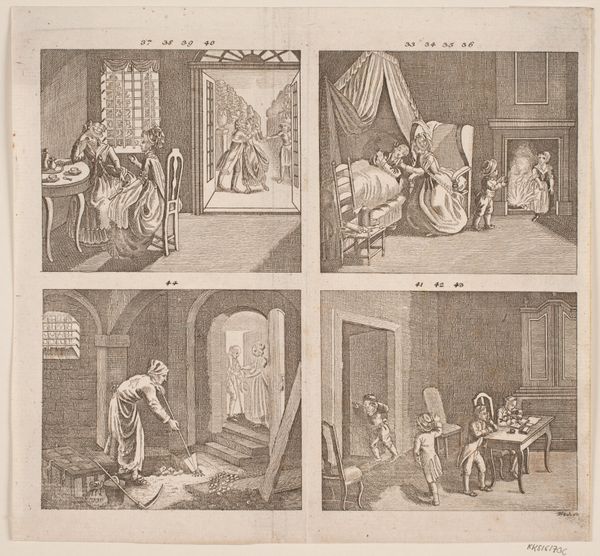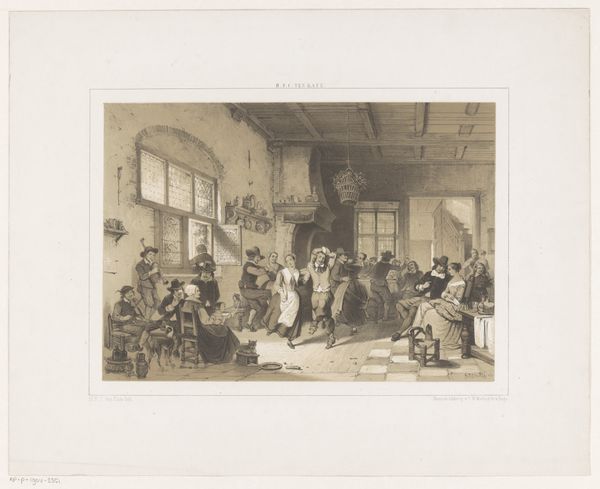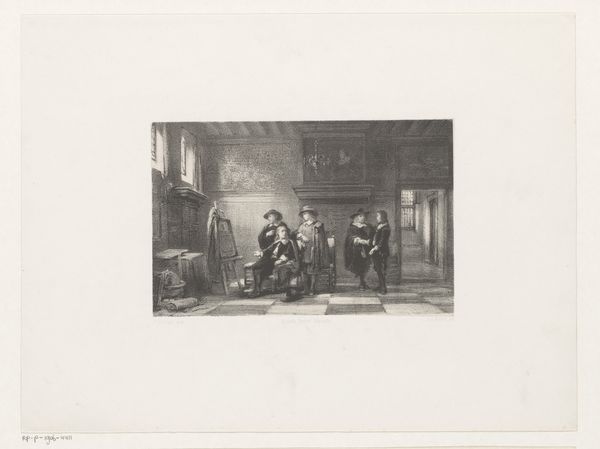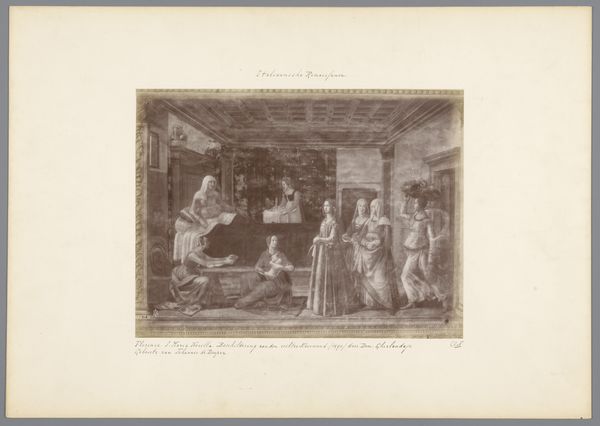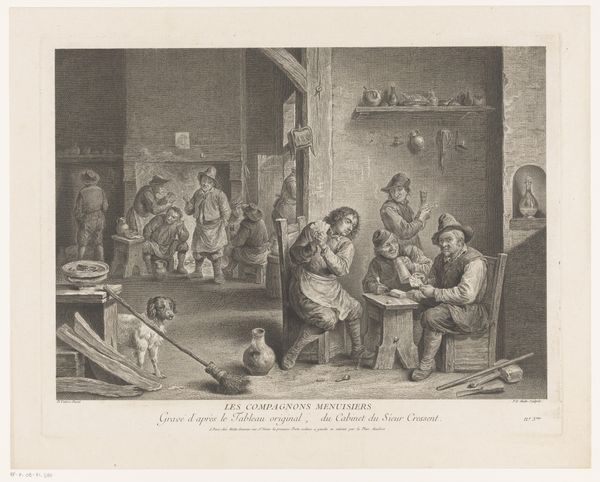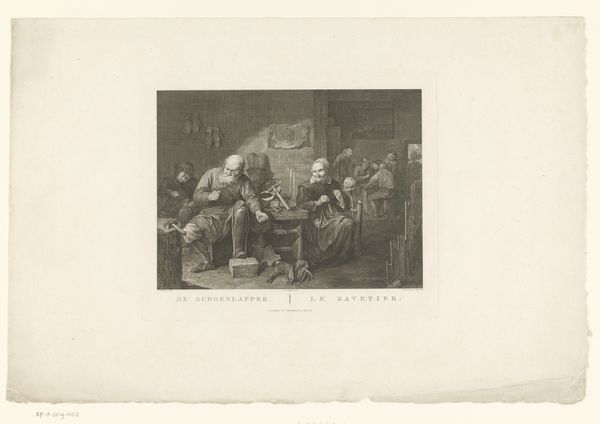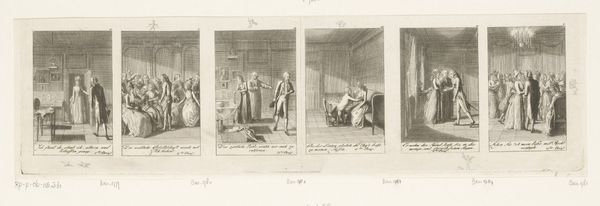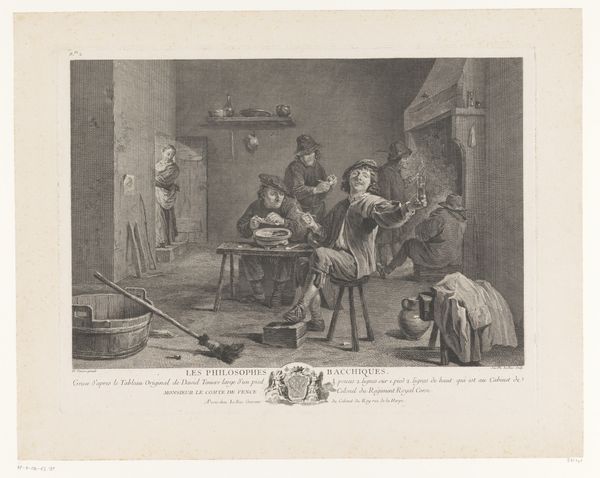
Dimensions: height 183 mm, width 227 mm
Copyright: Rijks Museum: Open Domain
Curator: Let’s discuss Daniel Nikolaus Chodowiecki’s "Menselijke karaktertrekken" or “Human characteristics,” an engraving from 1769 housed here at the Rijksmuseum. Editor: My first thought is that there is an attempt at narrative sequencing with each vignette, despite the seemingly limited color palette. It's all lines, delineations, and careful textures. I immediately perceive that each separate composition may point to universalities about behaviors that repeat and reflect throughout culture and society. Curator: Indeed, observe how the composition divides the sheet into four distinct scenes. This organizational structure mirrors the Enlightenment’s passion for categorization, a systematic way of understanding human behavior. Each pane represents distinct spaces but it is the subtle ways that space is being used for symbolic gestures that holds cultural meanings. Editor: Precisely. Consider the symbolism inherent in domestic scenes like that in the upper-left panel. We have a patriarchal male figure seemingly recovering on the divan, in need of nursing. Even if unintentional, Chodowiecki gives his characters recognizable idiosyncrasies through posture, gaze, and staging within a shared interior space. The symbols indicate dependency, and familial bonds, perhaps speaking to broader cultural narratives regarding societal structure at the time? Curator: Certainly. Look, too, at how Chodowiecki uses line work. The crisp lines against the blank space generate implied value and dimension. This lends a very controlled precision which reflects the social control under the guise of “civilization” happening across Europe. In some ways this piece also serves as a mirror reflecting these subtle shifts in morality as it intersects with societal reform. Editor: The fourth quadrant showing an invalid hints to a memento mori. The whole of life in stages is subtly placed alongside social commentary, perhaps hinting that humanity as a whole is unwell, that humanity is flawed. Curator: Perhaps. These vignettes are windows into the attitudes of a rising bourgeois class. Editor: This piece invites multiple interpretations that encourage active viewing, wouldn't you agree? Curator: Precisely; a reminder that even within strict visual structure there is always room for meaning.
Comments
No comments
Be the first to comment and join the conversation on the ultimate creative platform.
